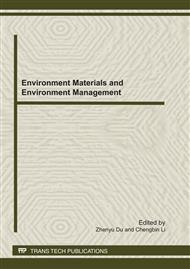p.101
p.106
p.110
p.113
p.117
p.122
p.127
p.132
p.137
Biodegradability of Acrylic Retanning Agent DT-R548 with Medium and Large Relative Molecular Weight
Abstract:
The methods of respiratory curve and COD30 were adopted to evaluate the biodegradability of acrylic retanning agent DT-R548 with medium and large relative molecular weight, which was used as the substrate of microorganism. The main results obtained by the method of respiratory curves were as follows. When the concentration of substrate was 0~3000mg/L, the respiratory curves of the substrate were under the curve of endogenous, which showed that the substrate has inhabiting effect on microorganism. When the concentration of the substrate was 1500mg/L, the utilization of the substrate by microorganism was the most. The main results obtained by the method of COD30 were as follows. When sludge concentration was 1000mg/L and pH was 7, the biodegradation rate of 1500mg/L DT-R548 was 19.74%. Under above condition, the biodegradation rates of DT-R548 with other concentrations were much smaller. Moreover, as indicated in the respiratory curves, the effect of sludge concentration, pH, salinity and co-metabolism on the biodegradability of the substrate was obvious. Under the experimental conditions, when the concentration of the substrate was 1500mg/L, the sludge concentration was 3000mg/L, pH was 7.5 and salinity was 0.5%, the biodegradability of the substrate was the best. The glucose was as co-metabolism substrate and when its concentration was 600mg/L, the biodegradability of the substrate was obviously increased.
Info:
Periodical:
Pages:
117-121
Citation:
Online since:
July 2011
Authors:
Price:
Сopyright:
© 2011 Trans Tech Publications Ltd. All Rights Reserved
Share:
Citation:


